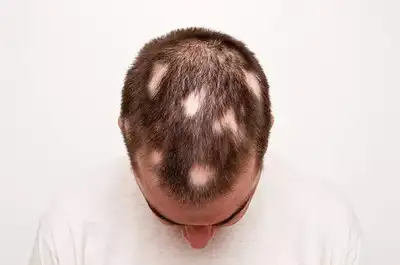How Much Time Is Needed for Alopecia Areata Treatment ?
Alopecia areata is an autoimmune condition that causes sudden hair loss in patches, which can be distressing for those affected. If someone is seeking Alopecia Areata Treatment Abu Dhabi, it's natural to wonder about the timeline involved. The duration of treatment can vary widely depending on several factors, including the severity of the condition, the chosen treatment approach, and the individual's response to therapy. This article explores the typical timeline for alopecia areata treatment, what patients can expect, and helpful insights into managing the journey toward hair regrowth.
Factors Influencing the Duration of Alopecia Areata Treatment
Severity and Extent of Hair Loss
The extent of hair loss plays a significant role in determining how long treatment might take. Mild cases with small patches may respond more quickly, sometimes within a few months, whereas more extensive hair loss might require a longer period of consistent treatment to see visible results.
Type of Treatment Chosen
Different treatment options have varying timelines. Some approaches may produce faster results, while others are more gradual. The specific method selected often depends on individual preferences, medical advice, and the nature of the alopecia.
Individual Response and Immune System
Every person's immune system reacts uniquely to treatment. Some individuals may experience rapid hair regrowth, while others might need extended periods of therapy before noticeable improvements occur.
Consistency and Adherence to Treatment
Adherence to prescribed treatment regimens significantly impacts the timeline. Regular application or administration of treatments, as directed by healthcare providers, can help ensure the most efficient progress.

Typical Timeframes for Alopecia Areata Treatment
Initial Response Period
Most patients begin to notice some signs of improvement within a few months of initiating treatment. This initial response can vary based on the factors mentioned earlier. For some, small hairs may start to grow back as early as three to six months.
Moderate Hair Regrowth
After six to twelve months, many individuals observe more substantial hair regrowth, especially if the treatment is effective and consistently followed. During this phase, hair may start to look more natural and cover larger areas of scalp.
Long-term Results and Maintenance
Complete hair restoration in alopecia areata can take longer, often extending beyond a year or even multiple years in some cases. Maintenance therapy might be necessary to sustain hair growth and prevent relapse.
Factors That Can Accelerate or Delay Progress
- Early diagnosis and prompt initiation of treatment usually lead to better and faster outcomes.
- The presence of other autoimmune conditions might influence the pace of recovery.
- Psychological stress and lifestyle factors can also impact the effectiveness of treatment.
Managing Expectations During Alopecia Areata Treatment
Patience Is Key
Patients should understand that hair regrowth is a gradual process. While some may see quick improvements, others may need to wait longer. Maintaining patience and realistic expectations can help manage emotional well-being during treatment.
Regular Monitoring and Follow-up
Consistent follow-up appointments with healthcare providers are essential. They help monitor progress, make necessary adjustments to treatment plans, and provide encouragement throughout the process.
Keeping a Hair and Scalp Journal
Documenting changes in hair growth, scalp condition, and any symptoms can help both patients and practitioners assess the effectiveness of the treatment plan over time.
Common Challenges During Treatment
Fluctuations in Hair Loss and Growth
It's common for hair to shed temporarily during treatment, even after initial regrowth. This can be part of the natural healing process and should not deter individuals from continuing therapy.
Emotional and Psychological Impact
Hair loss can affect self-esteem and confidence. Support from mental health professionals or support groups can be beneficial for emotional resilience during the treatment journey.
FAQs About Alopecia Areata Treatment Duration
How soon can I expect to see results?
Results can vary, but some individuals might notice initial signs of hair regrowth within three to six months of starting treatment. More significant improvements typically appear after six months or longer.
Is there a chance that hair loss will recur after treatment?
Yes, alopecia areata is known for its unpredictable nature, and relapse can occur even after apparent improvement. Ongoing management and follow-up are vital to maintaining hair health.
Can treatment duration be shortened?
While some approaches may lead to quicker responses, it's essential to follow the prescribed treatment plan. Shortening treatment without medical guidance is not recommended and may reduce the chances of successful hair regrowth.
What should I do if I don't see improvement after several months?
If there's no noticeable progress after six to twelve months, consulting with a healthcare provider is crucial. They might recommend alternative therapies or adjustments to the current regimen to enhance outcomes.
Conclusion
Treating alopecia areata in Abu Dhabi involves a journey that varies from person to person. While some may see results within months, others might require more extended periods of therapy and patience. Understanding the factors that influence treatment duration, maintaining consistent follow-up, and managing expectations can help individuals navigate this process more comfortably. With the right approach and support, many people experience significant hair regrowth and improved confidence over time.
READ MORE : Can Alopecia Areata Treatment Prevent Future Hair Loss?